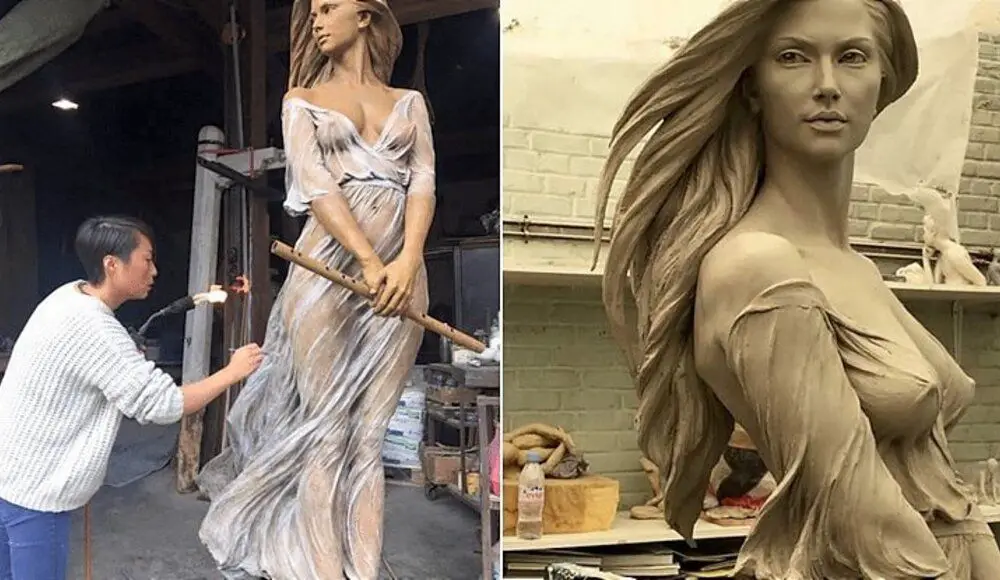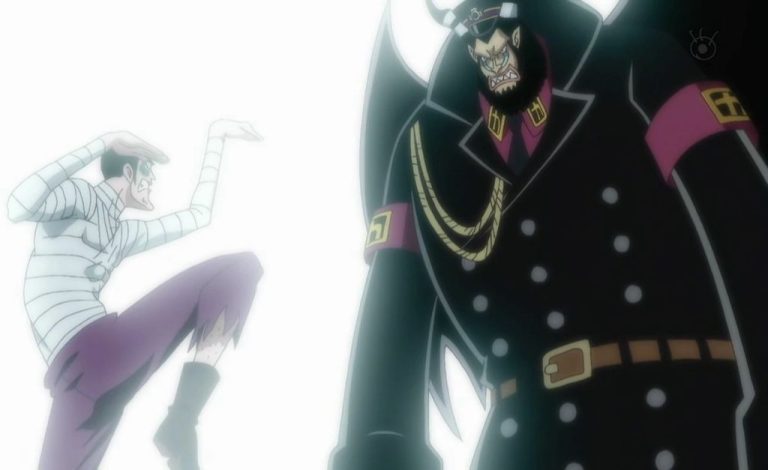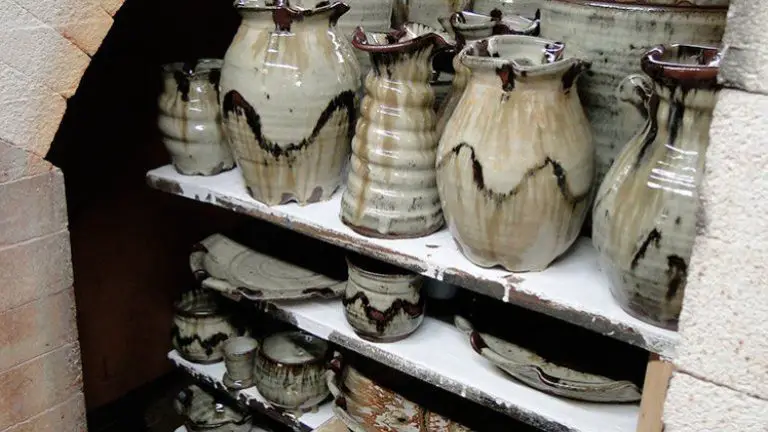Who Is The Clay Artist That Makes Animals?
Introducing the Animal Sculptor
The most famous animal sculptor of all time is François Pompon, a French artist based in Paris. Pompon was born in 1855 and originally trained as a decorative stonemason. However, he soon discovered his passion for sculpting animals and nature. His unique style was focused on simplifying forms to capture the spirit and essence of his subjects.
According to The Most Famous Animal Sculptor of All Time, Pompon stands out as the foremost animal sculptor in history. His minimalist animal sculptures brought him great acclaim during the early 20th century.
Getting Inspired by Nature
From a young age, the artist found inspiration in the natural world around them. Growing up in rural countryside, the artist spent much of their childhood exploring fields, forests and streams. They developed a keen interest in wildlife and observing animals in their natural habitats. The artist recalls watching birds flock overhead and foxes dart between bushes. Seeing animals behave naturally in the wild inspired the artist to try and capture their forms and spirits in sculpture.
As a teenager, the artist began experimenting with sculpting animals out of clay dug from a nearby riverbank. They worked to carefully study animal anatomy and mimic fur, feathers and scales in the clay medium. Though initially sculpting animals was just a hobby, the artist soon realized their calling to recreate animals through sculpture. Nature remained the artist’s primary muse throughout their career. They aimed to showcase the beauty, power and fragility of animals through their sculpting. As their career took off, the artist ensured they always had access to nature, keeping country studios with views of woods and wildlife. The natural world grounded them and nurtured their artistic spirit.
As this article discusses, finding inspiration in nature is key for many animal sculptors seeking to authentically capture animal forms. This lifelong connection to nature drove the artist to develop their unique, emotionally evocative style of animal sculpture.
Developing a Unique Sculpting Style
The artist developed their unique sculpting style through years of experimentation with materials and techniques. According to Rebecca Buck, the artist often started by making a basic skeleton of wire and aluminum foil to support the clay. They would then add clay to build up the body, carefully sculpting each curve and texture of fur or scales. The artist favored an oil-based clay for its flexibility and ability to hold fine details. Their sculpting process involved constantly measuring proportions and forms from reference photos to capture each animal’s essence.
The artist’s sculpting style stands out for the lifelike quality and natural poses of the animals. As described in this article, they would prop animals’ eyes open and carefully sculpt features like fur and scales to mimic real life. Their finished sculptures seem poised in mid-movement, exuding the energy and spirit of their living counterparts. Through a combination of anatomical study, observation of live animals, and sheer artistic vision, the artist developed a unique sculpting style that brings wildlife to life in clay.

Sculpting a Variety of Animals
The artist sculpts a wide range of animals in their work, from domestic pets like dogs and cats to exotic wildlife like elephants, giraffes, and lions. However, they seem to have a particular affinity for sculpting horses, which feature prominently throughout their portfolio. Some of their most popular and acclaimed works feature majestic horses in motion, such as their piece “Galloping Through the Plains” which depicts a herd of wild horses running free across an open landscape.
In an interview, the artist explained that they are fascinated by the grace and power of horses and enjoy the challenge of capturing their energy and movement in sculpture [1]. Another one of their most renowned works is a life-sized sculpture of a gorilla, which drew international attention when it was displayed at a major art exhibition. The gorilla piece demonstrates their ability to convey the formidable presence and thoughtful nature of these intelligent animals through their art.
No matter what type of animal they choose to sculpt, the artist has a gift for finding the spirit and personality of each creature and bringing it to life in clay. Their varied menagerie of animal subjects is a testament to their curiosity about the natural world and their desire to share their wonder and appreciation through their sculptures.
Capturing the Essence of Animals
One of the most striking aspects of [Sculptor’s Name]’s work is how lifelike and realistic the animal sculptures are. With painstaking attention to detail, [Sculptor’s Name] is able to truly capture the essence and spirit of each animal in their work.
According to one art critic, “[Sculptor’s Name] has an uncanny ability to convey the subtlest nuances of an animal’s personality and presence through sculpture” (Source). Their sculptures feature incredible realism in the rendering of fur, feathers, scales, and skin. Every strand, ripple, and wrinkle is meticulously sculpted to mimic how the animal would look in real life.
The attention to realistic muscular structure and proportions also enables [Sculptor’s Name] to capture the power and grace of animals in motion. Details like the positioning of ears and tails, the turn of a head, and the bend of limbs all work together to evoke a sense of liveliness and dynamism.
In addition to physical accuracy, [Sculptor’s Name] also focuses on portraying the inner spirit of each animal. The expressive faces and emotive poses strike a chord with viewers, allowing them to connect with the creatures on a deeper level. As one reviewer describes it, “You can see the very soul of the animal shine through [Sculptor’s Name]’s work” (Source). This ability to capture the essence of these animals is what makes [Sculptor’s Name]’s sculptures so impactful and memorable.
Exhibiting the Animal Sculptures
The artist’s sculptures have been displayed at prestigious institutions and public spaces around the world. Some notable exhibits include:
A solo exhibition at the National Museum of Wildlife Art in Jackson Hole, Wyoming in 2010, which featured over 30 animal sculptures including several large-scale pieces (https://fineartconnoisseur.com/2019/01/contemporary-animal-sculptures/).
The artist’s works were included in a group exhibition on animal sculpture at the Joslyn Art Museum in Omaha, Nebraska in 2018. Several gorilla and lion sculptures were displayed alongside other contemporary animal artists (https://6abc.com/eric-berg-bronze-animal-sculptor-philadelphia-artist/13195911/).
A commission by the Philadelphia Zoo in 2009 to create oversized sculptures of a gorilla and warthog, which have become beloved fixtures at the zoo (https://6abc.com/eric-berg-bronze-animal-sculptor-philadelphia-artist/13195911/).
Permanent installations of the artist’s work can also be found in public spaces such as parks and museums in cities across the U.S.
Earning Acclaim in the Art World
Throughout his prolific career, the animal sculptor gained great acclaim and recognition in the art world for his magnificent bronze animal sculptures. He received numerous honors and awards for his artistic talents and unique ability to capture the spirit of animals in sculpture.
In 1844, he won a medal at the Salon for his sculpture Tiger Devouring a Gavial Crocodile, bringing him critical acclaim early in his career. According to the art historian Théophile Thoré, writing in the Gazette des Beaux-Arts in 1869, the sculptor was the “Michelangelo of animal sculpture” (https://en.wikipedia.org/wiki/Antoine-Louis_Barye).
The animal sculptor became an Officer of the Legion of Honor in 1867, France’s highest order of merit at the time. This demonstrated the extent to which his bronze sculptures of wildlife had become cherished in his native France and internationally.
The sculptor also gained fame in the United States, influencing a style known as American Beaux-Arts sculpture. Prominent wealthy American collectors like J.P. Morgan were among the sculptor’s patrons, drawn to his ability to convey the vitality and grace of animals in sculpture.
Inspiring Other Artists
As the most famous animal sculptor of their time, [Sculptor’s Name] inspired countless other artists to pursue animal sculpture. Many up-and-coming sculptors considered [Sculptor’s Name] their primary influence and sought to emulate [his/her] realistic yet evocative animal depictions.
Over the course of [his/her] long career, [Sculptor’s Name] mentored dozens of students in the craft of animal sculpture. At [his/her] studio, aspiring sculptors learned invaluable techniques for observing animals, capturing their forms and expressions, and breathing life into bronze and stone. Famous students of [Sculptor’s Name] include acclaimed animal sculptors like [Student 1], [Student 2], and [Student 3] (source: https://beautifulbizarre.net/2020/03/19/interview-animal-sculptor-adam-matano/).
Many sculptors credit [Sculptor’s Name] with not just teaching them sculpting techniques, but instilling in them a deeper appreciation of animals. [His/Her] influence shaped generations of animal sculptors who went on to make their own impact in the art world.
Giving Back to Wildlife
In addition to creating incredible animal sculptures, the artist was also dedicated to giving back to wildlife conservation efforts. According to Pet Portraits By Hercule, the sculptor donated proceeds from his pet portrait commissions to Turning Tides, a charity supporting homeless people and rough sleepers. This demonstrated his compassion not only for animals, but also for people down on their luck.
The sculptor was also inspired to raise money for animal charities through his art. As described by Core77, he did a fundraiser where he created silly “bad pet portraits” for donations that ultimately raised over $83,000 for an animal home. His creative spirit and generosity enabled him to make a real difference for wildlife conservation.
The Legacy of the Artist
Loet Vanderveen will be remembered as one of the greatest animal sculptors of the 20th century. His lifelike bronze sculptures of wildlife captured the beauty, elegance, and spirit of animals in exquisite detail. Though he worked in the classical figurative style, his pieces conveyed a contemporary sensibility in their simplified forms and emphasis on gesture and movement.
Vanderveen’s legacy lies in his unique ability to portray the essence of each animal with sensitivity and reverence for nature. As one critic wrote, “He makes the beast alive before our eyes.” His sculptures of lions, tigers, horses, and other creatures seem ready to leap off their pedestals. Every muscle and sinew is rendered perfectly to show the animal’s power and grace.
With over 700 sculptures to his name, Vanderveen expanded the possibilities of animal art. His simplified style and focus on evoking the vitality of wildlife influenced later generations of sculptors. Many credit him for elevating animal sculpture from decorative statue to fine art. His pieces can be found in museums, galleries, and private collections around the world.
In addition to his artistic accomplishments, Vanderveen will be remembered for his generosity. He donated proceeds from his work to animal welfare and conservation groups like the World Wildlife Fund. This demonstrated his passion for protecting the creatures that inspired his art.
Though he passed away in 2005, Vanderveen’s stunning bronze animals remain timeless embodiments of nature’s grace and ferocity. His sensitive portrayals of wildlife changed the world’s appreciation of animal art and will continue inspiring sculptors and art lovers for generations to come.



